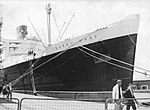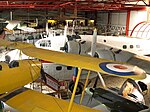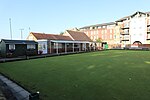Southampton Terminus railway station

Southampton Terminus railway station served the Port of Southampton and Southampton City Centre, England from 1839 until 1966. The station was authorised on 25 July 1834 and built as the terminus of the London and Southampton Railway, which later changed its name to the London and South Western Railway (LSWR). The station opened as "Southampton" on 10 June 1839, although it was not officially operational until 11 May 1840, due to the track not being fully linked between Winchester and Basingstoke. The station building was constructed in 1839–40 to the design of Sir William Tite. The LSWR added the much larger South Western Hotel building, designed by John Norton, in 1872. The line was extended into the Ocean Dock Terminal to allow boat trains to terminate on the quayside.
Excerpt from the Wikipedia article Southampton Terminus railway station (License: CC BY-SA 3.0, Authors, Images).Southampton Terminus railway station
Terminus Terrace, Southampton St Mary's
Geographical coordinates (GPS) Address Nearby Places Show on map
Geographical coordinates (GPS)
| Latitude | Longitude |
|---|---|
| N 50.897777777778 ° | E -1.3963888888889 ° |
Address
Genting Casino
Terminus Terrace
SO14 3FE Southampton, St Mary's
England, United Kingdom
Open on Google Maps







